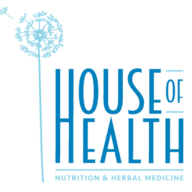The Sugar in Your Blood
Diabetes is a condition in which a person’s inborn sugar control mechanisms are not working properly – there is either no insulin being produced or it is not working effectively.
“Diabetes mellitus” comes from the Greek language: ‘diabetes’ meaning siphon – to pass through – and ‘mellitus’ – the Latin for honeyed or sweet. (i.e., sweet things passing through). This is because not only is excess sugar found in the blood but it may also appear in the urine. In medieval times diabetes was actually diagnosed by tasting the urine!
Normal blood sugar control
Your body converts food into glucose – this is the preferred form of energy for cells. Glucose is rapidily produced from sweet foods such as sweets and cakes, or from starchy foods such as potatoes, pasta or bread once they’re digested. The liver is also able to manufacture glucose – from fats and proteins.
Under normal circumstances the pancreas carefully regulates blood sugar (glucose) levels by producing the hormone insulin. This is produced in direct response to blood sugar levels and it’s job is to stimulate cells to absorb glucose from the blood to keep the level within “acceptable limits”. Insulin also stimulates the liver to absorb and store any glucose that’s left over.
After a meal, the amount of glucose in the blood rises, and this triggers the release of insulin. When blood glucose levels fall, during exercise for example, insulin levels fall too.
The pancreas also produces a hormone called glucagon, which stimulates the liver to release stored glucose when needed, raising the level of glucose in the blood. It has the opposite effect on blood sugar that insulin does.
Types of Diabetes
Type 1
Also known as Insulin dependent, or juvenile onset diabetes, this condition manifests early in life and blood sugar levels must be monitored several times a day and insulin administered by means of regular injections. It is caused by auto-destruction of the insulin-producing cells of the pancreas, creating an absolute deficiency of insulin. Thus life-long insulin therapy is required.
Type 2
Also known as “maturity onset diabetes”, this form generally manifests in middle-age. It is commonly associated with being obese or overweight and follows a pre-diabetic state or insulin resistance. People with Metabolic syndrome (syndrome X) and women with PCOS are more likely to develop the condition.
Diabetes insipidus
This “diabetes” is not related to blood sugar levels, but is a conditon of seemingly insatiable thirst, excessive amounts of urine are passed and in a twenty-four hour period over three litres may be passed.
Dehydration is common when diabetes insipidus is not recognised or treated causing the level of sodium in the blood to be too high. This causes tiredness, lethargy, confusion, and raises the risk of fits and coma.
Symptoms of Diabetes
The main symptom is thirst and a need to pass urine frequently. Tiredness, fatigue, nausea and wounds that take a long time to heal and/or an increase in the number of infections is common.
Type 1 tends to be rapid onset (over a period of days or weeks) and is often accompanied by weight loss in spite of increased hunger, whereas the onset of Type 2 is insidious over many years and subjects tend to be overweight.
Reactive Hypoglycaemia
In this condition, the intake of carbohydrate-rich foods causes an initial rise in blood sugar that results in the overproduction of insulin. This drops the blood sugar level rapidly stimulating hunger and/or shaking or a feeling of weakness.
Insulin Resistance
As a person gains weight – generally due to inadequate exercise and excessive energy intake – the individual cells get to a point where they have been so flooded with glucose that they “shut down” so to speak. The resultant high circulating glucose causes insulin levels rise – an action that basically forces the glucose into the cells. When this is going on, a person’s blood sugar level usually remains within the normal range (3.3-6.0), but a fasting blood test reveals an elevation of insulin. Eventually the pancreas fails and insulin replacement is needed. This is also a feature of PCOS and Metabolic Syndrome
Holistic Management Strategy
A natural therapist takes an holistic approach to healing. Finding out the specifics of your challenges and initiating a nutritional program that incorporates foods to lower blood sugar, plus using herbal and/or nutritional supplements to keep blood sugar within normal range is an initial goal. Weight loss and control is a secondary, but very important, objective.
Weight Loss
If you are a diabetic and you are overweight, the most important strategies are healthy eating, exercise and to lose those excess kilos. Allow us to partner you in your journey to achieve your goals.











